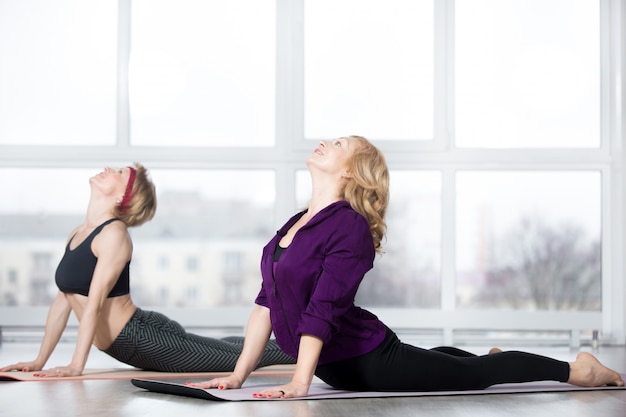
Yoga isn’t just about flexible bodies; it has significant benefits for memory, heart, and bone health. In the UK, spending on yoga classes and equipment has reached £790 million annually. While some yoga trends like paddleboard or dog yoga can seem strange, scientific research backs the many advantages of traditional practices.
Researchers at UCLA discovered that a three-month yoga and meditation course was more effective than memory exercises in reducing age-related brain impairment. Another study showed yoga improved sleep quality in breast cancer survivors.
Lucy Edge, a former advertising executive, turned to yoga instead of antidepressants when she faced deep depression. She took a six-month break, traveled to India, and learned yoga. While she didn’t achieve the ideal yoga body, she found happiness and contentment. Inspired by her experience, Lucy went on to write three books about yoga and created Yoga Meds, a section of her website listing over 300 clinical trials showcasing benefits from yoga for various conditions.
Yoga can significantly benefit your health. For instance, one study found yoga and meditation more effective than memory exercises for improving spatial and visual memory, reducing depression and anxiety, and increasing resilience to stress. Participants did just one hour of Kundalini yoga weekly, which incorporates breathing techniques, meditation, and chanting mantras.
Yoga can also be as effective as conventional exercises like brisk walking in reducing heart disease risk. Stress is a major factor in heart disease, raising blood pressure and heart rate. Yoga helps reduce stress, thereby lowering heart disease risk. It has demonstrated benefits for emotional health, helping manage anxiety, stress, and depression, which are common in individuals who have experienced cardiac events.
Charlotte Watts, a yoga teacher and nutritional therapist, has created a stress-reducing series of gentle yoga poses. Restorative yoga, recommended by senior teacher Anna Ashby, involves postures supported with bolsters and cushions, giving the nervous system a break.
Yoga can be an effective remedy for back pain as well. Musculoskeletal physiotherapist and yoga teacher Sarah Shone developed yoga classes for the Primary Care Trust’s rehabilitation program, with 87% of participants reporting reduced pain. Yoga’s focus on pelvic floor muscles and its weight-bearing nature help increase bone density and manage incontinence.
For beginners, it’s essential to inform the teacher about any health issues and start with gentle styles like Hatha or Iyengar yoga. If you have specific conditions like back pain, consult a doctor about subsidized yoga courses under exercise referral schemes.
Good props can significantly enhance your yoga practice. When choosing a yoga mat, consider factors like where it will be stored, its weight for portability, length for taller individuals, and thickness to protect your joints. Healthista recommends the Elephant Cork Yoga mat from Valka Yoga, which is eco-friendly, antimicrobial, and offers excellent joint cushioning.
Adding a yoga block to your practice can help with challenging poses, providing stability and grip. Cork blocks, while not as light as foam ones, offer better stability.
Whether you’re flexible or not, yoga will benefit you. Try styles like Yin or Restorative yoga for a calming session, Vinyasa Flow for an energetic practice, Iyengar for precise postures, Anusara for alignment-focused movements with music, or Yoga Therapy for health-specific needs.
Lucy Edge’s latest book, “Down Dog Billionaire,” is available on Amazon.